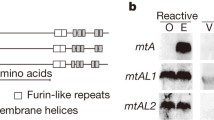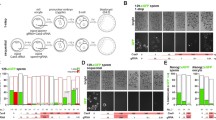Abstract
In contrast to the two X chromosomes that participate equally in oogenic meiosis in mammals, during spermatogenesis the solitary X chromosome can be regarded as an inadequate pairing partner for the Y chromosome. Hence it is epigenetically silenced and consigned to the XY body. This silenced state can transfer between generations. The sleeping X will awake when in a female cell with an accompanying maternally donated X chromosome (a homologous DNA duplex). Transgene experiments in nematodes indicate that a similar process can operate at the level of chromosomal segments. A gene that mispairs at meiosis is epigenetically silenced and transferred to the next generation where its awakening is conditional on the presence of a meiotic pairing partner. These intergenerational transfers of epigenetic labelling, and intragenerational reversals thereof, might apply at the level of individual bases when confronted with inadequate pairing partners. During meiotic recombination, homologous DNA sequences of maternal and paternal origin pair to form a mutual duplex, and mismatches can be detected and corrected (gene conversion). But there is only a 50 % chance that the correction will favor a particular allele. There is information that a DNA duplex segment is in need of correction, but not how correction could asymmetrically favor one allele (generally the wild-type). If the segment were epigenetically marked as “suspect,” this information could be used in a future generation to favorably correct should more information, in the form of a homologous unmutated duplex, became available. So fundamental would this mechanism be that it would have provided a selection pressure for the emergence of epigenetic marking early in evolution.


Similar content being viewed by others
References
Arbeithuber B, Betancourt AJ, Ebner T, Tiemann-Boege I (2015) Crossovers are associated with mutation and biased gene conversion at recombination hotspots. Proc Natl Acad Sci USA 112:2109–2114
Baarends WM, Wassenaar E, van der Laan R et al (2005) Silencing of unpaired chromatin and histone H2A ubiquitination in mammalian meiosis. Mol Cell Biol 25:1041–1053
Baker CL, Shimpei Kajita S, Walker M et al (2015) PRDM9 drives evolutionary erosion of hotspots in Mus musculus through haplotype-specific initiation of meiotic recombination. PLoS Genet 11:e1004916
Bateson W, Pellew C (1915) On the genetics of ‘rogues’ among culinary peas (Pisum sativum). J Genet 5:15–36
Battail G (2014) Information and life. Springer, Dordrecht
Bean CJ, Schaner CE, Kelly WG (2004) Meiotic pairing and imprinted X chromatin assembly in Caenorhabditis elegans. Nature Genet 36:100–105
Bengtsson BO (1986) Biased conversion as the primary function of recombination. Genet Res 47:77–80
Bhattacharyya T, Gregorova S, Mihola O et al (2013) Mechanistic basis of infertility of mouse intersubspecific hybrids. Proc Natl Acad Sci USA 110:E468–E477
Brand CL, Presgraves DC (2016) Evolution: on the origin of symmetry, synapsis, and species. Curr Biol 26:R319–R337
Brink RA (1956) A genetic change associated with the R Locus in maize which is directed and potentially reversible. Genetics 41:872–889
Butler S (1878) Life and habit. Trübner, London
Butler S (1926) In: Jones HF, Bartholomew AT (eds) The Shrewbury edition of the works of Samuel Butler, vol 20. Cape, London, p 13
Bygren LO, Tinghög P, Cartensen J et al (2014) Change in paternal grandmothers’ early food supply influenced cardiovascular mortality of female grandchildren. BMC Genet 15:12
Cooper DW (1971) Directed genetic change model for X chromosome inactivation in eutherian mammals. Nature 230:292–294
Davies B et al (2016) Re-engineering the zinc fingers of PRDM9 reverses hybrid sterility in mice. Nature 530:171–176
Engel N (2015) Imprinted X chromosome inactivation offers up a double dose of epigenetics. Proc Natl Acad Sci USA 112:14408–14409
Forsdyke DR (1981) Are introns in-series error detecting sequences? J Theor Biol 93:861–866
Forsdyke DR (1994) Relationship of X chromosome dosage compensation to intracellular self/not-self discrimination: a resolution of Muller’s paradox? J Theor Biol 167:7–12
Forsdyke DR (1995) Entropy-driven protein self-aggregation as the basis for self/not-self discrimination in the crowded cytosol. J Biol Syst 3:273–287
Forsdyke DR (1996) Different biological species “broadcast” their DNAs at different (G+C)% “wavelengths.” J Theor Biol 178:405–417
Forsdyke DR (2001) The origin of species revisited. A victorian who anticipated modern developments in darwin’s theory. McGill-Queen’s University Press, Montreal
Forsdyke DR (2009) X chromosome reactivation perturbs intracellular self/not-self discrimination. Immun Cell Biol 87:525–528
Forsdyke DR (2011) The selfish gene revisited. Biol Theor 5:246–255
Forsdyke DR (2012) Ohno’s hypothesis and muller’s paradox: sex chromosome dosage compensation may serve collective gene functions. BioEssays 34:930–933
Forsdyke DR (2013) Introns first. Biol Theor 7:196–203
Forsdyke DR (2016) Evolutionary bioinformatics, 3rd edn. Springer, New York
Gartler SM (2014) A brief history of dosage compensation. J Genet 93:591–595
Gavrilov LA, Gavrilova NS, Kroutko VN et al (1997) Mutation load and human longevity. Mut Res 377:61–62
Gladyshev E, Kleckner N (2014) Direct recognition of homology between double helices of DNA in Neurospora crassa. Nature Comm 5:3509
Gould SJ (1993) Fulfilling the spandrels of world and mind. In: Selzer J (ed) Understanding scientific prose. University of Wisconsin Press, Madison, pp 310–336
Graves JAM (1996) Mammals that break the rules: genetics of marsupials and monotremes. Annu Rev Genet 30:233–260
Hamming RW (1980) Coding and information theory. Prentice-Hall, Englewood Cliffs
Hare JT, Taylor JH (1985) One role for DNA methylation in vertebrate cells is strand discrimination in mismatch repair. Proc Natl Acad Sci USA 82:7350–7354
Huynh KD, Lee JT (2004) A continuity of X-chromosome silence from gamete to zygote. Cold Spring Harb Q Biol 69:103–112
Leopold LE, Heestand BN, Seonga S et al (2015) Lack of pairing during meiosis triggers multigenerational transgene silencing in Caenorhabditis elegans. Proc Natl Acad Sci USA 112:E2667–E2676
Liao D (1999) Concerted evolution, molecular mechanism and biological implications. Am J Hum Genet 64:24–30
Lifschytz E, Lindsley DL (1972) The role of X-chromosome inactivation during spermatogenesis. Proc Natl Acad Sci USA 69:182–186
Lyon MF (1961) Gene action in the X-chromosome of the mouse (Mus musculus L.). Nature 190:372–373
Lyon MF (1999) Imprinting and X chromosome inactivation. In: Ohlsson R (ed) Results and problems in cell differentiation. Springer, Heidelberg, pp 73–90
Makova KD, Li W-H (2002) Strong male-driven evolution of DNA sequences in humans and apes. Nature 416:624–626
Marcet-Houben M, Gabaldón T (2015) Beyond the whole-genome duplication: phylogenetic evidence for an ancient interspecies hybridization in the baker’s yeast lineage. PLoS Biol 13:e1002220
McKee BD (1996) Meiotic recombination: a mechanism for tracking and eliminating mutations? BioEssays 18:411–419
Miklos GLG (1974) Sex-chromosome pairing and male fertility. Cytogenet Cell Genet 13:558–577
Muller HJ (1950) Evidence of the precision of genetic adaptation. Harvey Lect 43:165–229
Palamara PF, Francioli LC, Wilton PR et al (2015) Leveraging distant relatedness to quantify human mutation and gene-conversion rates. Am J Hum Genet 97:775–789
Pembrey ME, Bygren LO, Kaati G et al (2006) Sex-specific, male-line transgenerational responses in humans. Eur J Hum Genet 14:159–166
Reanney DC (1979) RNA splicing and polynucleotide evolution. Nature 277:598–600
Reanney DC (1984) RNA splicing as an error-screening mechanism. J Theor Biol 110:315–321
Reese V (2002) Mutation repair: a proposed mechanism that would enable complex genomes to better resist mutational entropy and which suggests a novel function for meiosis. In: The human behavior and evolution society 14th annual meeting, Rutgers University. Abstracts of presentations to session on “New Developments in Biology,” June 21, p 40
Rozen S, Skaletsky H, Marszalek JD et al (2003) Abundant gene conversion between arms of palindromes in human and ape Y chromosomes. Nature 423:873–876
Schaefer S, Nadeau JH (2015) The genetics of epigenetic inheritance: modes, molecules, and mechanisms. Quart Rev Biol 90:381–415
Shiu PK, Raju NB, Zickler D, Metzenberg RL (2001) Meiotic silencing by unpaired DNA. Cell 107:905–916
Speed RM (1986) Oocyte development in XO foetuses of man and mouse: the possible role of heterologous X-chromosome pairing in germ cell survival. Chromosoma 94:115–124
Sun S, Payer B, Namekawa S et al (2015) Xist imprinting is promoted by the hemizygous (unpaired) state in the male germ line. Proc Natl Acad Sci USA 112:14415–14422
Turner JMA (2015) Meiotic silencing in mammals. Annu Rev Genet 49:395–412
Turner JMA, Mahadevaiah SK, Fernandez-Capetillo O et al (2005) Silencing of unsynapsed meiotic chromosomes in the mouse. Nature Genet 37:41–47
Wahls WP, Davidson MK (2011) DNA sequence-mediated, evolutionarily rapid redistribution of meiotic recombination hotspots. Genetics 189:685–694
Wahls WP, Davidson MK (2012) New paradigms for conserved, multifactorial, cis-acting regulation of meiotic recombination. Nucelic Acids Res 40:9983–9989
Wang J, Syrett CM, Kramer MC et al (2016) Unusual maintenance of X chromosome inactivation predisposes female lymphocytes for increased expression from the inactive X. Proc Natl Acad Sci USA 113:E2029–E2038
Winge Ő (1917) The chromosomes. Their numbers and general importance. Compt Rendus Trav Lab Carlsberg 13:131–275
Yang S, Yuan Y, Wang L et al (2012) Great majority of recombination events in Arabidopsis are gene conversion events. Proc Natl Acad Sci USA 109:20992–20997
Zhao J, Sun BK, Erwin JA et al (2008) Polycomb proteins targeted by a short repeat RNA to the mouse X chromosome. Science 322:750–756
Acknowledgments
Queen’s University hosts Forsdyke’s webpages, where copies of some of the references may be found.
Author information
Authors and Affiliations
Corresponding author
Rights and permissions
About this article
Cite this article
Reese, V.R., Forsdyke, D.R. Meiotic Pairing Inadequacies at the Levels of X Chromosome, Gene, or Base: Epigenetic Tagging for Transgenerational Error-Correction Guided by a Future Homologous Duplex. Biol Theory 11, 150–157 (2016). https://doi.org/10.1007/s13752-016-0242-6
Received:
Accepted:
Published:
Issue Date:
DOI: https://doi.org/10.1007/s13752-016-0242-6




